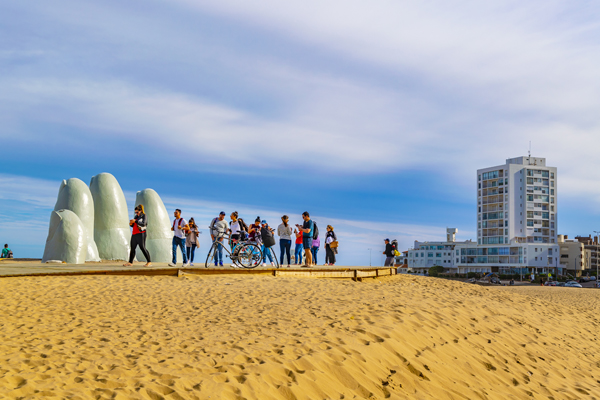
Punta del Este, a picturesque coastal city in Uruguay, is renowned for its beautiful beaches, vibrant nightlife, and luxurious resorts. While it may not boast the extensive public transportation systems of a metropolis like New York City, it does offer several options for residents and visitors alike. The primary modes of public transportation in Punta del Este include local buses operated by companies such as Maldonado Intendencia and COPSA, as well as private taxi services. For those considering a move to this sun-drenched city, the question often arises: is it feasible to live in Punta del Este without a car? The answer largely depends on one’s lifestyle and location within the city. While the public transportation system can be sufficient for daily commutes and leisurely exploration, some may find the convenience of a car preferable for more extensive travel or during the off-season when services are less frequent.
Buses
The bus system in Punta del Este is the backbone of public transportation, connecting various neighborhoods and extending to nearby areas such as Maldonado and San Carlos. Companies like Maldonado Intendencia and COPSA offer a range of routes that cover most of the city and its surroundings. The buses are generally reliable and affordable, with tickets costing only a few Uruguayan pesos, making them accessible for daily use. During the summer months, when the city’s population swells with tourists, the frequency of buses increases to accommodate the higher demand. While the buses are considered safe, it’s always prudent for travelers to stay alert and keep an eye on their belongings, especially in crowded situations. Anecdotal evidence suggests that expats and locals alike find the bus system convenient for reaching the city’s popular spots, such as Playa Brava and Playa Mansa, as well as shopping centers and restaurants.
Taxis
Taxis in Punta del Este offer a more private and direct form of transportation. They can be hailed on the street, booked via phone, or increasingly through mobile apps, which provide a secure and easy way to arrange a ride. While more expensive than buses, taxis provide the flexibility to travel at any time and directly to a specific destination. They are considered safe, and many drivers are known to be friendly and willing to share local knowledge with passengers. For expats living in areas not well-served by buses or those who prefer not to adhere to bus schedules, taxis are a convenient alternative. However, the cost can add up, so regular use may not be economical for everyone.
Car Rentals and Ride-Sharing
For those who desire the freedom to explore beyond the city limits or who value convenience over cost, car rentals are available in Punta del Este. International and local rental agencies offer a range of vehicles to suit different needs, from compact cars to SUVs ideal for navigating the diverse Uruguayan terrain. Ride-sharing services, while not as prevalent as in larger cities, are slowly making their way into the market, providing another option for residents and visitors. These services offer a middle ground between the cost of taxis and the convenience of personal vehicles. They are particularly useful for trips to more secluded beaches or rural areas where public transportation is sparse.
Walking and Bicycles
Punta del Este is also a pedestrian-friendly city, with many residents choosing to walk, especially in the bustling downtown area and along the promenade. The city’s layout is conducive to walking, and many of the most scenic spots are best enjoyed on foot. For longer distances or a more active lifestyle, bicycles are a popular choice. The city offers bike rentals, and there are dedicated paths in certain areas, making cycling both a practical and enjoyable mode of transportation. During the high season, when traffic can be heavy, bicycles offer a swift and eco-friendly alternative to motorized transport.
Conclusion
In conclusion, while Punta del Este may not have a subway system or the extensive public transportation network of a large city, it provides adequate options for residents and visitors to navigate the area. Buses and taxis form the core of public transport, supplemented by car rentals and ride-sharing services for those seeking more flexibility. Walking and cycling are also viable options in this relatively compact city. An expat could comfortably live in Punta del Este without a car, especially if residing in the city center or along the main bus routes. However, for those living further afield or wishing to explore the more remote and picturesque areas of Uruguay’s coastline, having access to a car could enhance the living experience.


